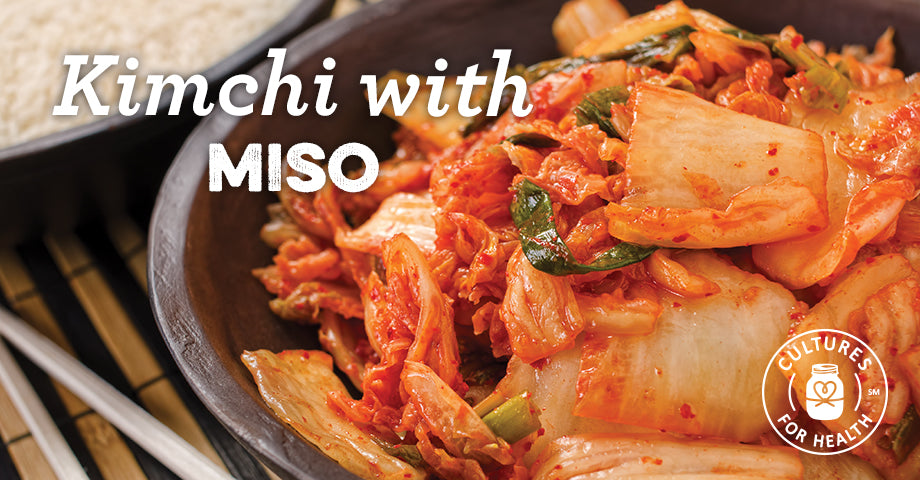
This kimchi is a more traditional version, with flavors of miso (or gochujang if you can find it), fish sauce, and sweet rice flour. Many of these items are available in larger grocery stores. Or check for Asian food markets in your area.
35 minutes
180 minutes
5
INGREDIENTS AND EQUIPMENT AVAILABLE AT CULTURES FOR HEALTH
Fermented Vegetable Kit

Fermented Vegetable Kit
$40.99
Make tasty fermented veggies at home with our DIY Fermented Vegetable Kit!
This kit is also great for making kimchi, sauerkraut, and more! Equipment in the kit may appear different than pictured.
INGREDIENTS:
- 2-3 large heads Napa cabbage (approx 2.5 lbs)
- ¼ cup sea salt
- 1¼ cup filtered water
- 2 Tbsp. sweet rice flour (mochiko)
- 2-8 chopped red chili peppers depending on desired heat
- 4 garlic cloves, peeled
- 1-inch piece ginger, peeled
- 3 green onions
- 2 Tbsp. fish sauce without preservatives
- 3 Tbsp. gochujang or miso
- 2 Tbsp. sugar
- Gloves to protect hands from capsaicin oils in the peppers
INSTRUCTIONS:
- Coarsely chop cabbage and toss with salt. Set aside for 30 minutes, stirring after 15 minutes.
- Start the sauce by whisking together water and rice flour. Heat until mixture just comes to a boil, stirring constantly. Cool slightly.
- To prepare peppers, put on gloves and remove stems. For milder kimchi, remove the seeds and inner membrane with a spoon. Add peppers and remaining ingredients to blender or food processor. Pulse until ingredients are chopped. Then add cooled rice flour paste. Blend until paste is smooth.
- Squeeze salted cabbage thoroughly and place in a clean bowl. Pour seasoning paste over cabbage. Use gloved hands to mix all ingredients together well.
- Pack into prepared half-gallon fermenting jar. Add fermentation weights to kimchi and ferment for at least 1 week. There will be little brine the first day, but it will increase as the fermentation continues.
-
Refrigerate or continue culturing in a cool location, 50-60ºF.
















